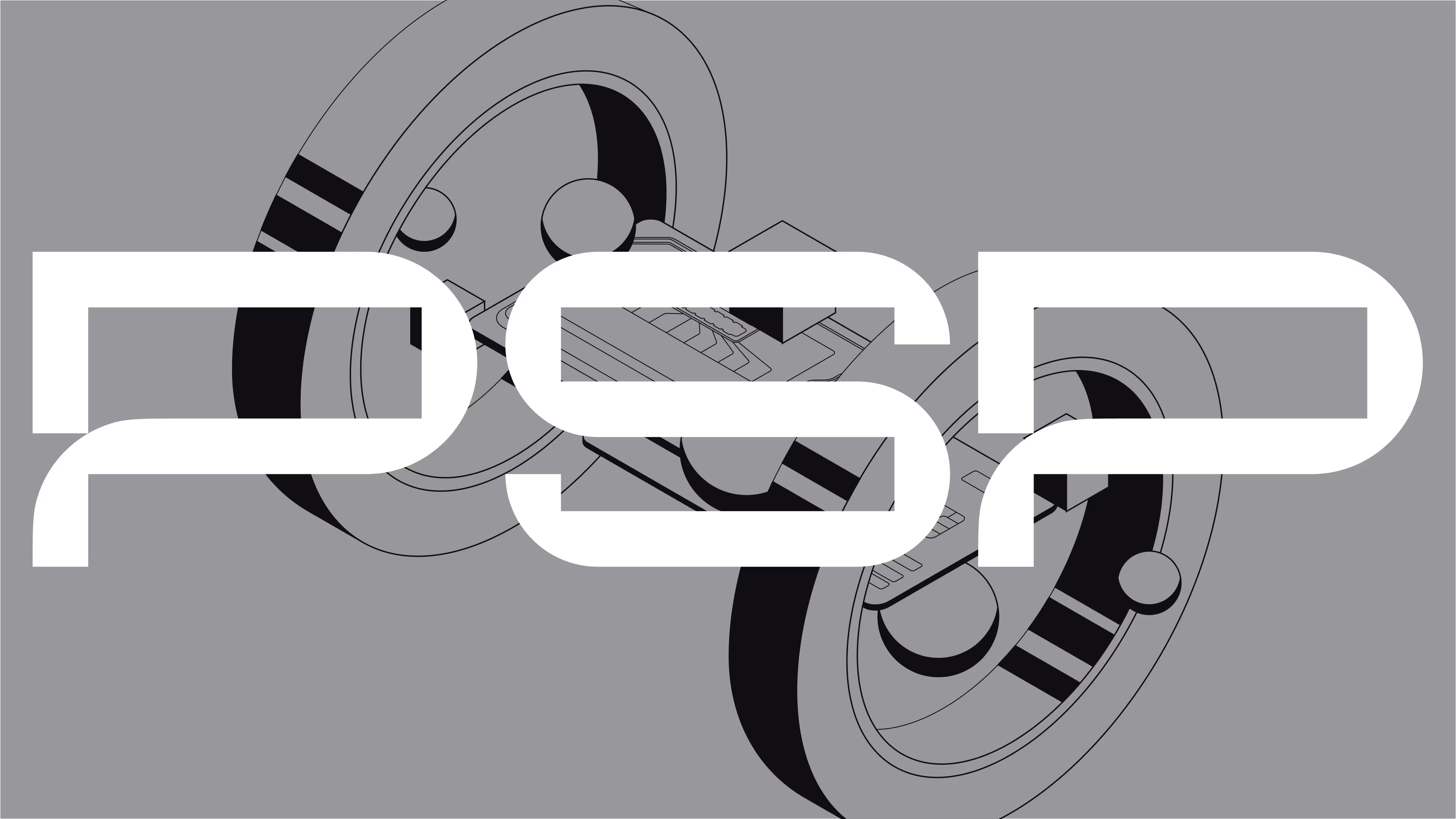
Why the merchant payment journey isn’t linear — and why PSPs are more relevant than ever
At Stitch, we’ve been at the forefront of building payments solutions for enterprises. In our experience, here’s why the merchant payment journey, especially for enterprises, is no longer linear and what it really means to build and maintain cost-efficient payments at scale.

For years, the payments industry has told itself a simple story: as your business grows, your payment strategy should mature from an all-in-one Payments Service Provider (PSP) integration to partial ownership, and finally, direct acquiring. Many saw this as a one-way street, a journey whose natural end game was cutting out intermediaries, lowering per-transaction fees and taking full control. The prevailing narrative was often that PSPs should only be used by small and medium-sized businesses.
The reality for many large and sophisticated merchants, however, is proving very different. We increasingly see businesses that once went “direct” circle back to working with PSPs or establishing hybrid models. It’s not a failure of scale or ambition - it’s a recognition of the true total cost of ownership (TCO) of running payments infrastructure. This includes the strategic importance of keeping in-house teams lean and focused on growth - not payments integrations, maintenance, compliance and security updates.
At Stitch, we’ve been at the forefront of building payments solutions to help enterprises undertake this next generation of evolution. This has shaped how we think about acquiring, orchestration, and the role of modern PSPs. Here’s why the merchant payment journey, especially for enterprises, is no longer linear and what it really means to build and maintain cost-efficient payments at scale.
From plug-and-play to full control: the classic maturity curve
For many merchants, the payment journey follows the below maturity curve:
- Stage 1: Startup or SME – using a single PSP or PayFac model. Integration is quick, onboarding is fast, integration is simple and the merchant can accept cards and local payment methods without worrying about major additional work, scheme compliance or fraud tooling.
- Stage 2: Scaling up - volume and margin pressure make per-transaction fees more noticeable and soft targets for reduction. Merchants often negotiate an ISO or SO model via a PSP, which gives them better rates and partial ownership of risk and technology solutions.
- Stage 3: Large enterprise – with sufficient volume and operational sophistication, merchants pursue direct acquiring: they contract directly with acquirers, manage merchant IDs (MIDs), build their own payment infrastructure and build or buy third party fraud, tokenisation and dispute handling tools.
This is often framed as the most logical progression: start small, then “graduate” to owning your stack – but “graduation” brings unexpected challenges.
The hidden cost of focusing on per-transaction fees is much higher than many would imagine. Merchants can hardly be blamed for making this mistake, given the difficulty of estimating true cost of ownership (TCO) and the simplicity of a payment fee comparison between an acquirer and a PSP.
The hidden cost and complexity of going direct
Counter to most assumptions, building and maintaining custom payments infrastructure is much more complicated and expensive than, for example, buying and maintaining machinery in a factory.
Direct acquiring does promise lower transaction fees and can offer more negotiating power, but merchants quickly discover that building and maintaining a modern payments stack is a highly specialised, complex and ongoing effort – not a simple, once-off project.
Some of the hidden costs and complexities include:
- Delayed go-to-market and stunted growth opportunities
- The need to develop and maintain new payment methods as they arise
- Existing payment infrastructure maintenance
- Token vaults and PCI compliance
- 3DS integration and updates
- Fraud detection and risk scoring tools
- Card updater, retries and smart routing logic
- Keeping up with frequent rule updates from Visa, Mastercard and local schemes
- Reporting, settlement reconciliation and chargeback handling
- Engineering, project management, operations and knowledge risk
Payments experts and engineers are rare and expensive. So many merchants rely on external contractors for builds. However, when this happens, payment and technical knowledge is often less than ideal at project kick-off, and what little there was often leaves when the project ends. This creates solution fragility and restricts further business growth opportunities.
While some merchants get stuck in the cycle of starting and abandoning payments projects (or providers), some try to build an in-house team and systems for the ongoing nature of their payment infrastructure demands. This team must not only keep pace with business payment objectives, but also cope with an ever-evolving technology, regulatory and scheme landscape. For many merchants, this becomes an expensive distraction from their core business: serving customers and growing market share.
The real value PSPs provide - beyond “just payments”
When merchants look at the likelihood of project success and the TCO of building and running payments infrastructure rather than just considering transaction fees, the value of working with PSPs like Stitch becomes clearer and very compelling:
- Software and tools: Pre-built, actively, professionally maintained payment integrations, orchestration, fraud detection, smart retries and tokenisation platforms.
- Time to market: Adding a new payment method, cross-border market or fallback acquirer via a PSP can take weeks - instead of months or years when done internally.
- Advisory expertise: PSPs have expertise you can leverage to continually optimise your payment strategy and technical solutions.
- Compliance and scheme expertise: PSPs invest in staying current with complex scheme mandates and local regulations, so merchants don’t have to.
- Operational resilience: PSPs offer 24/7 monitoring, chargeback handling and dispute management backed by dedicated teams.
- Salvaged focus: allowing your team to focus on growth could produce as much value or more than the entire TCO of operating your own payment stack.
This broader perspective reveals how PSPs become an extension of the merchant’s own payment strategy, engineering, operations and compliance teams, but at a fraction of the annual cost, which is shared across many merchants.
Why big merchants come back to PSPs
At Stitch, we’ve increasingly seen large, sophisticated merchants pivot back to PSP relationships after ISO/SO models or direct acquiring, often for these reasons:
- They underestimated the ongoing software investment needed to stay competitive.
- They needed faster market entry than internal roadmaps and teams could deliver.
- They realised their engineering team was spending more time on payments development and maintenance than on growth initiatives.
- They lost key contractors or employees, creating knowledge gaps in critical systems and restricting future opportunities.
- Once the functionality was built out, focus on optimisations like routing and redundancy required too many engineering and business resources.
- Ongoing partnership and provider management put strain on business functions that needed to focus on core growth vs. supporting payment teams.
- Ongoing regulatory, compliance, licensing and audit requirements caused unexpectedly high hiring and operational costs.
This return isn’t a step backward, but rather a carefully weighed strategic decision that enables the business to refocus on core strengths and leaves payment complexity to dedicated partners with the relevant expertise to handle efficiently.
The modern reality: payments strategy is cyclical, not linear
The journey is no longer:
PayFac/TPPP → ISO/SO → Direct Acquiring → Done
Instead, it’s a cycle, shaped by business priorities:
- New compliance requirements? PSP-managed tools can keep teams lean.
- Growth, new markets or new payment methods? A PayFac/TPPP model can accelerate time to market and simplify operational overhead.
- Pressure on margins? An ISO/SO model may improve per-transaction economics if you’re willing to take on more risk, technical effort and operational overhead.
- Extreme scale? Acquiring directly with Stitch can provide the best of both worlds: lower fees, simplified technical effort and reduced operational overhead.
The most sophisticated merchants no longer ask, “When should we do direct acquiring?” They ask, “Where does build vs. buy create the most value for us right now?”.
Why Stitch is built for this new reality
At Stitch, we’ve designed our platform to help merchants escape the binary choice between “cheap but complex direct acquiring or ISO/SO models” and “convenient but expensive Payfac/TPPP-only models.”
As a result of the Stitch Group’s recent acquisition of Efficacy Payments, we can offer licensed acquiring services as well as a world-class payments platform with modern orchestration and fraud tools. This includes:
- PSP capabilities: Pre-built mult-method integrations, tokenisation, smart routing and fraud controls to keep internal teams lean.
- Faster market entry: Access to new local payment methods, acquirers or fallback options without rebuilding core systems.
- Flexible models: Merchants can work with Stitch as a PayFac/TPPP, ISO/SO with smart models employed across different payment methods in the same solution.
- Direct acquiring economics: Merchants can contract directly with Stitch Group as their acquirer, lowering per-transaction fees as far as possible.
- Lower TCO: Reduce the need to hire large payments teams or rely on contractors for critical, hard-to-maintain software.
In effect, merchants partnering with Stitch can capture the benefits of direct acquiring – cost savings, smart technical stack ownership and speed to market – while avoiding the hidden TCO and risks that often undermine those gains.
Focus on growth, not on transaction fees
If you’re rethinking your payments strategy – whether you’re considering going direct, coming back to a PSP or something in between – we’d be glad to share what we’ve learned, help you understand the real tradeoffs of your next move, and find the best solution for you.
Interested in exploring a hybrid payments model?











